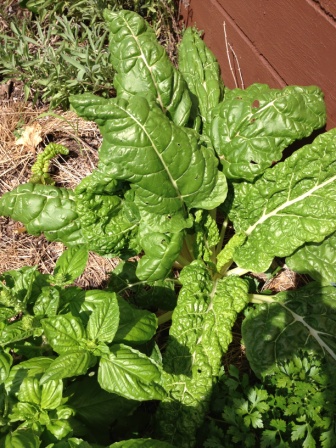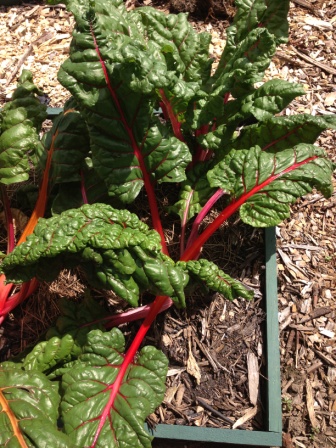Swiss Chard - the Perfect Vegetable

No denial here – Swiss Chard is my favorite vegetable. It’s the Lebron James of the garden – does it all week in and week out. Are you interested in nutrition? Well, Swiss Chard can’t be beat – an excellent source of high quality protein (amazed?), dietary fiber, vitamin B6, vitamin K, vitamin C, vitamin A, vitamin E, as well as minerals such as zinc, potassium, iron, manganese, calcium and zinc. The sole knock on Swiss Chard is its fairly high concentration of salt .
How about versatility? Good raw in a salad? Check. Cooked greens? Check. Asparagus substitute? Check. What’s not to like?
So you’re persuaded that you want to grow Swiss Chard? Here’s how to go about it.
Like most greens, Swiss Chard likes a rich loam with plenty of organic material. Soil pH should be in the 6.0-7.0 range.
Starting Swiss Chard indoors is considered good form. Since the seed will not germinate consistently in soil below 50 degrees F., direct sowing usually can’t be done before May. To get an earlier harvest, start your seed indoors about 4/15 and then transplant it into the garden about 5/15, or when the soil temperature reaches 60 degrees. One slight drawback with chard is that it’s not particularly appreciative of the cold, so don’t rush it.
Like lettuce and other greens, you’re faced with the momentous decision of how to harvest your beloved chard. Alternatives include:
- Harvest the whole plant, roots and all. The only reason to do this is if you want the space for some other plant or you’re having a particularly unsettling time of it that day.
- Cut off all the leaves about 1” above ground level. The plant will regenerate tender new leaves.
- Harvest only the outer leaves and the plant will continue to grow new leaves at its center.
If you select door #3, then leave 10” between plants. Otherwise 6” will suffice.
Swiss Chard, like many greens, performs very well as a fall crop. Start indoors at the start of July, and by late September you’ll be enjoying another round of savory chard.
A further bonus of your new found appreciation of Swiss Chard comes from its comely appearance. Varieties such as Bright Lights, Bright Yellow and Charlotte will enhance the appearance of most flower beds, so there’s no need to practice strict flower/vegetable segregation.
Another variety worth considering is Fordhook Giant. As its modest name advertises, this variety generates outstanding yields, but without the startling good looks of its siblings. Sort of like the decision many women face at one time or another in their lives – the chiseled football stud or the pimply nerd millionaire-to-be. In this case you truly can have your hulk and your millions too - all for the price of a couple of seed packets.
Author:Paul Zimmermann
